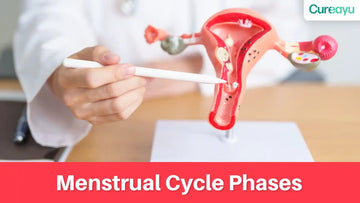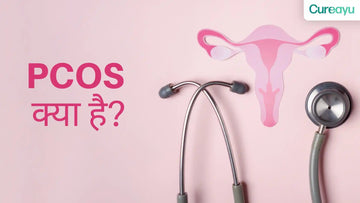In the intricate landscape of human biology, few processes are as remarkable and complex as the menstrual cycle. This natural rhythm, unique to individuals with female reproductive systems, is a sophisticated dance of hormones, biological changes, and physiological transformations that occur monthly. Far more than just a periodic event, the menstrual cycle is a testament to the incredible intricacy of human reproductive health, representing a delicate balance of biological mechanisms that prepare the body for potential pregnancy.
Understanding the menstrual cycle is not just a matter of medical knowledge, but a crucial aspect of personal health awareness. Each phase represents a unique chapter in a monthly narrative, where hormonal fluctuations orchestrate a complex interplay of physical and emotional changes. By diving deep into these phases, individuals can gain profound insights into their bodies, recognize patterns, and become more attuned to their overall well-being.
Also Read: How to Make Periods Come Fast: Natural and Safe Ways to Induce Your Menstrual Cycle
What Is Menstrual Cycle
The menstrual cycle is a natural, recurring process that occurs in individuals with female reproductive systems, typically between puberty and menopause. It is a carefully choreographed sequence of hormonal and physiological changes designed to prepare the body for potential pregnancy. This cycle is regulated by a complex interaction of hormones produced by the hypothalamus, pituitary gland, and ovaries, working in remarkable synchronization.
On average, a menstrual cycle spans approximately 28 days, though this can vary significantly between individuals. The primary purpose of this cycle is to create an optimal environment for potential fertilization and pregnancy. Each month, the reproductive system undergoes a series of changes aimed at releasing a mature egg and preparing the uterus to potentially support embryo implantation.
Also Read: Understanding Light Periods: Symptoms, Causes, Risks, and Prevention Tips
Menstrual Cycle Phases
Menstrual Phase
The menstrual phase marks the beginning of the cycle, typically lasting 3-7 days. During this time, if pregnancy has not occurred, the uterine lining (endometrium) sheds, resulting in menstrual bleeding. Hormone levels of estrogen and progesterone are at their lowest, causing the uterine wall to break down and exit the body. Many individuals experience symptoms like cramping, fatigue, and mood fluctuations during this phase.
Follicular Phase
Overlapping with the menstrual phase, the follicular phase is characterized by the development of follicles in the ovaries. The pituitary gland releases follicle-stimulating hormone (FSH), which stimulates the ovaries to produce 5-20 follicles. Each follicle contains an immature egg, but typically only one will mature and be released during ovulation. Estrogen levels begin to rise, promoting the thickening of the uterine lining in preparation for potential egg implantation.
Ovulation Phase
Occurring around day 14 of a typical 28-day cycle, the ovulation phase is a brief but critical period. A surge in luteinizing hormone (LH) triggers the release of a mature egg from the ovary. The egg travels through the fallopian tube, where it remains viable for approximately 24 hours, awaiting potential fertilization. This is the most fertile period of the menstrual cycle, with increased chances of pregnancy if sexual intercourse occurs.
Luteal Phase
Following ovulation, the luteal phase spans approximately 14 days. The ruptured follicle transforms into the corpus luteum, which produces progesterone. This hormone prepares the uterine lining for potential embryo implantation. If fertilization does not occur, the corpus luteum degenerates, causing a drop in hormone levels. This hormonal decline signals the onset of the next menstrual phase, completing the cycle.
Common Issues in Menstrual Cycle
- Irregular Periods: Variations in cycle length or unexpected bleeding patterns can indicate hormonal imbalances, stress, or underlying health conditions.
- Dysmenorrhea: Severe menstrual cramps that can be debilitating, often caused by prostaglandin production and potentially linked to conditions like endometriosis.
- Premenstrual Syndrome (PMS): A collection of physical and emotional symptoms occurring before menstruation, including mood swings, bloating, and breast tenderness.
- Heavy Menstrual Bleeding: Excessive blood loss that can lead to anemia and significantly impact daily life, potentially indicating hormonal imbalances or structural issues.
- Amenorrhea: The absence of menstruation, which could result from factors like extreme weight changes, hormonal disorders, or certain medical conditions.
When To See a Doctor
While some variations in the menstrual cycle are normal, certain signs warrant professional medical consultation. Individuals should seek medical advice if experiencing:
- Periods lasting longer than 7 days
- Extremely heavy bleeding requiring frequent pad/tampon changes
- Severe pain that interferes with daily activities
- Irregular cycles with significant variations
- No menstruation for more than three consecutive months
- Bleeding between periods
- Sudden changes in menstrual pattern
- Symptoms suggesting potential reproductive health issues
A healthcare professional can conduct thorough examinations, including hormonal tests, ultrasounds, and comprehensive health assessments to diagnose and address any underlying concerns.
Conclusion
The menstrual cycle is a remarkable biological process that reflects the intricate complexity of human reproductive health. Far from being a mere monthly occurrence, it represents a sophisticated system of interconnected biological mechanisms. Each phase tells a unique story of hormonal interactions, physiological preparations, and potential life creation.
Understanding these phases empowers individuals to recognize their body's signals, anticipate changes, and make informed health decisions. It transforms what might seem like an inconvenient monthly event into a fascinating journey of biological adaptation and potential.
By fostering awareness, breaking down stigmas, and promoting open conversations about menstrual health, we can create a more supportive and understanding environment. Every individual's experience is unique, and respecting these differences is crucial in promoting holistic reproductive health.
Knowledge is power, and understanding the menstrual cycle is a powerful step towards comprehensive self-care, body positivity, and proactive health management. Embrace your body's natural rhythms, listen to its signals, and approach your reproductive health with curiosity, respect, and compassion.











